Archived Fire Damage Blog Posts
Wildfire Awareness: Protecting Your Home
4/17/2024 (Permalink)
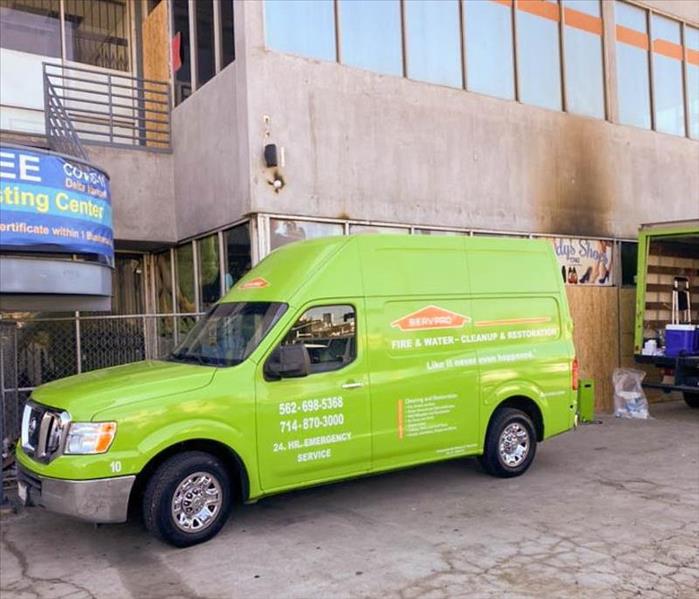 By understanding the dangers of wildfires and taking steps to prepare and protect your home, you can minimize the risk of damage.
By understanding the dangers of wildfires and taking steps to prepare and protect your home, you can minimize the risk of damage.
Wildfires are a natural phenomenon that can pose significant threats to homes and communities. In this blog, we're delving into the dangers of wildfires and sharing some practical tips on how to prepare and protect your home. By understanding the risks and taking proactive measures, you can better protect your property and loved ones from the devastating impacts of wildfires.
Understanding the Dangers
Wildfires are fast-moving, unpredictable fires that can spread rapidly, consuming everything in their path. High temperatures, dry conditions, and strong winds fuel the flames, making wildfires difficult to control and extinguish. In addition to destroying homes and natural landscapes, wildfires pose risks to humans, wildlife, and the environment.
Creating Defensible Space
Creating defensible space around your home is crucial for reducing the risk of wildfire damage. Clearing vegetation, debris, and flammable materials from the immediate vicinity of your home creates a buffer zone that can help prevent flames from reaching your property. This includes maintaining a clear zone of at least 30 feet around structures and ensuring that trees are pruned and grass is kept short.
Hardening Your Home
In addition to creating defensible space, hardening your home against wildfires is essential for improving its resilience to fire. This involves using fire-resistant building materials, such as metal roofing, non-combustible siding, and tempered glass windows. Installing ember-resistant vents and enclosing eaves and soffits can also help prevent ember intrusion, which is a common cause of home ignitions during wildfires.
Developing an Evacuation Plan
Preparing for the possibility of evacuation is an important aspect of wildfire readiness. Develop a comprehensive evacuation plan that includes multiple escape routes, designated meeting points, and communication strategies. Keep important documents, medications, and emergency supplies readily accessible, and ensure that all family members are familiar with the plan and know what to do in the event of a wildfire.
Staying Informed
Stay informed about wildfire activity in your area by monitoring local news, weather forecasts, and official communications from emergency management agencies. Sign up for emergency alerts and notifications to receive timely updates about evacuation orders, road closures, and other important information. Being informed allows you to make informed decisions and take necessary actions to protect yourself and your home during a wildfire.
Wildfires are a serious threat that requires proactive preparation and vigilance. By understanding the dangers of wildfires and taking steps to prepare and protect your home, you can minimize the risk of damage and ensure the safety of your family and property. From creating defensible space and hardening your home to developing an evacuation plan and staying informed, every action you take contributes to your wildfire readiness. Don't wait until it's too late – start preparing today to protect your home from nature's fury.
Protect your home. The Importance of Maintaining Your Dryer Vents to Prevent Fires
11/21/2023 (Permalink)
Dryer fires are a common yet preventable occurrence that can cause extensive damage to homes and put lives at risk. One crucial aspect of preventing such fires is regularly cleaning dryer vents. In this blog, we will delve into the importance of cleaning dryer vents to prevent fires and explore the steps involved in maintaining these vents.
Understanding the Risks
Dryers generate heat to dry clothes, but over time, lint and debris can accumulate in the dryer vent system. This build-up restricts airflow, causing the dryer to work harder and become hotter. The combination of excessive heat and flammable lint is a recipe for disaster, increasing the risk of a fire outbreak.
Preventing Lint Build-Up
Proper maintenance of your dryer vents includes routine cleaning to remove lint and debris. Start by cleaning the lint trap after each cycle, ensuring it's clear of any build-up. However, even with regular lint trap cleaning, lint can still accumulate in the vent system. Therefore, it's essential to schedule annual or bi-annual cleanings to thoroughly remove lint from the vent ducts.
Hiring Professional Services
While cleaning the lint trap is a task you can handle yourself, cleaning the entire vent system is best left to professionals. Certified technicians have the expertise and specialized tools to disassemble and clean the vents thoroughly. They can also identify any potential issues with the vent system, such as blockages or damage, and provide necessary repairs or replacements.
Signs of a Clogged Dryer Vent
It's crucial to be vigilant for signs that your dryer vent may be clogged, indicating the need for immediate cleaning. These signs include clothes taking longer to dry than usual, the dryer getting excessively hot during operation, a burning smell, or the presence of excessive lint or debris around the dryer vent opening. If you notice any of these signs, act promptly to prevent a potential fire hazard.
Maintenance Tips
In addition to regular vent cleaning, there are other maintenance practices to adopt to further minimize fire risks. Ensure the dryer is properly vented to the outside, avoiding long duct runs or using too many bends. Regularly inspect the vent cover outside your home and remove any obstructions, such as leaves or debris. Also, consider investing in a metal duct instead of a flexible plastic one, as it reduces the risk of lint accumulation.
By understanding the importance of cleaning dryer vents and adopting proper maintenance practices, you can significantly reduce the risk of a devastating fire. Regular cleaning, possibly with the assistance of professional services, ensures that your dryer operates efficiently, prevents overheating, and keeps your home and loved ones safe.
Remember, maintaining dryer vents is an ongoing responsibility, and prevention is key. By making it a habit to clean dryer vents regularly, you are taking a proactive step towards safeguarding your home from potential fire hazards. Don't underestimate the impact of a simple task like cleaning dryer vents – it can make a significant difference in protecting your home and promoting peace of mind.
The Road to Restoration: Tips for a Successful Fire Cleanup Process
8/30/2023 (Permalink)
Experiencing a fire in your Loveland, CO, home or property can be devastating, but the road to restoration begins with the fire cleanup process. Proper cleanup is crucial for minimizing further damage and setting the stage for successful restoration. In this article, we will explore key considerations and provide valuable tips to help homeowners and property owners navigate the fire cleanup process effectively.
Ensure Safety First
Before starting any fire cleanup activities, prioritize safety. Ensure the property is structurally sound and obtain clearance from the fire department or relevant authorities. Use personal protective equipment (PPE) such as masks, gloves, and goggles to protect yourself during cleanup.
Engage Professional Restoration Services
Consider hiring professional fire restoration experts, such as SERVPRO of Loveland, who specialize in fire cleanup. These professionals have the knowledge, experience, and equipment to handle the complexities of fire damage, ensuring a thorough and efficient cleanup process
Document the Damage
Before beginning cleanup, document the extent of the fire damage. Take detailed photographs or videos of the affected areas. This documentation will be crucial for insurance claims and working with restoration professionals.
Ventilate the Property
Proper ventilation is essential to remove smoke odor and improve air quality. Open windows and use fans to circulate fresh air. Consider using air purifiers or consult with professionals for advanced smoke odor removal techniques.
Water Damage Mitigation
Water used to extinguish the fire can cause additional damage. Address any water-related issues promptly to prevent mold growth and further structural damage. Consult with restoration professionals to assess and mitigate water damage effectively.
Soot and Smoke Residue Removal
Soot and smoke residue can be challenging to remove, often requiring specialized techniques and cleaning products. Avoid DIY methods that can worsen the damage. Professional restoration services have the expertise to safely and thoroughly remove soot and smoke residue from surfaces and belongings.
Salvaging and Cleaning Belongings
Work with restoration professionals to assess which belongings can be salvaged. They will guide you through the process of cleaning and restoring items such as furniture, clothing, documents, and electronics. Prompt action is crucial for increasing the chances of successful restoration.
Addressing Structural Concerns
Evaluate the structural integrity of your property after a fire. Engage professionals to assess and repair any damage to the foundation, walls, ceilings, and other structural elements. Prompt repairs are essential to ensure safety and prevent further deterioration.
Coordinate with Insurance
Notify your insurance company promptly and provide them with accurate documentation of the damage. Consult with your insurance adjuster to understand the coverage, claims process, and any additional documentation or information required.
The fire cleanup process is a crucial step toward restoring your home or property after a fire. By considering these key factors and following the tips outlined above, you can navigate the road to restoration more effectively. Remember, professional assistance, documentation, and safety measures are all essential components of a successful fire cleanup process. Take the necessary steps, and with time, patience, and expert guidance, you can restore your property and move forward on the path to recovery.
Restoring Safety: The Fire Damage Cleanup Process in Commercial Buildings
4/10/2023 (Permalink)
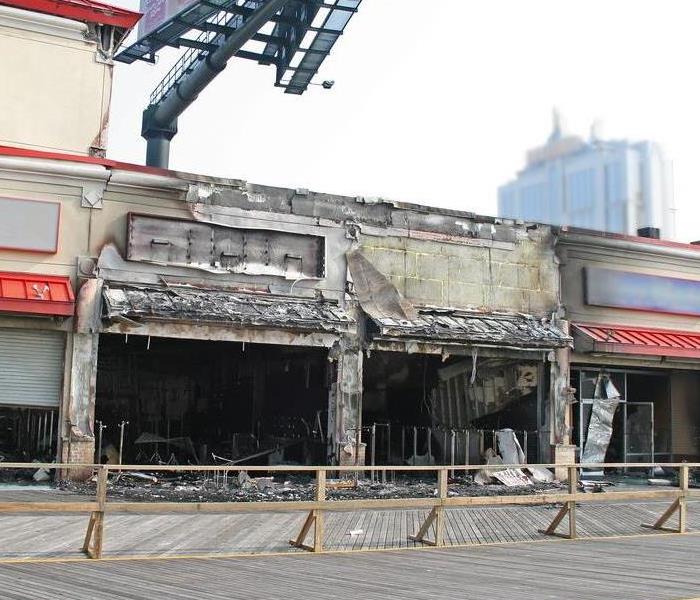 The fire damage cleanup process in commercial buildings is a complex process that requires specialized equipment and expertise.
The fire damage cleanup process in commercial buildings is a complex process that requires specialized equipment and expertise.
Commercial buildings are susceptible to fire damage, which can cause significant loss of property and business interruption. Fire damage requires specialized cleanup and restoration services to ensure that the building is safe to occupy again. In this blog, we'll discuss the fire damage cleanup process in commercial buildings and the steps involved in restoring the property to its preloss condition.
Assessing the Damage
The first step in the fire damage cleanup process is to assess the damage. A professional restoration company will conduct a thorough inspection of the building to determine the extent of the damage. This inspection will identify the areas of the building that are affected by fire, smoke, and water damage. The restoration company will also identify the source of the fire and determine the type of fire that occurred.
Removing Debris
The next step in the fire damage cleanup process is to remove all debris from the building. This includes any materials that were damaged by the fire, such as furniture, equipment, and building materials. The restoration company will use specialized equipment to remove debris from the building safely. It's important to remove all debris from the building to prevent further damage and to create a safe environment for the restoration process.
Cleaning and Sanitizing
After the debris is removed, the restoration company will begin the cleaning and sanitizing process. This involves removing smoke, soot, and water damage from the building's surfaces. The restoration company will use specialized equipment and cleaning solutions to clean and sanitize the building's walls, floors, and ceilings. This process will remove any traces of smoke and soot, which can cause health problems if left untreated.
Drying and Dehumidifying
After the cleaning and sanitizing process is complete, the restoration company will begin the drying and dehumidifying process. This process involves removing excess moisture from the building's surfaces and air. The restoration company will use specialized equipment, such as dehumidifiers and air movers, to dry the building thoroughly. This step is important to prevent mold growth and further damage to the building's structure.
Restoring the Building
After the building is dry, the restoration company will begin the process of restoring the building. This involves rebuilding damaged areas of the building, such as walls, ceilings, and floors. The restoration company will also replace damaged equipment and materials. The goal of the restoration process is to restore the building to its preloss condition, so it's safe to occupy again.
Final Inspection
Once the restoration process is complete, the restoration company will conduct a final inspection of the building. This inspection will ensure that all areas of the building are restored to their preloss condition. The restoration company will also conduct a final cleaning and sanitizing of the building to ensure that it's safe to occupy again.
The fire damage cleanup process in commercial buildings is a complex process that requires specialized equipment and expertise. It's important to hire a professional restoration company to ensure that the building is restored to its preloss condition safely. The restoration process involves assessing the damage, removing debris, cleaning and sanitizing, drying and dehumidifying, restoring the building, and conducting a final inspection. If your commercial building has experienced fire damage, contact a professional restoration company to begin the cleanup and restoration process as soon as possible.
8 Questions to Ask Before Hiring a Water Damage Restoration Company
2/20/2023 (Permalink)
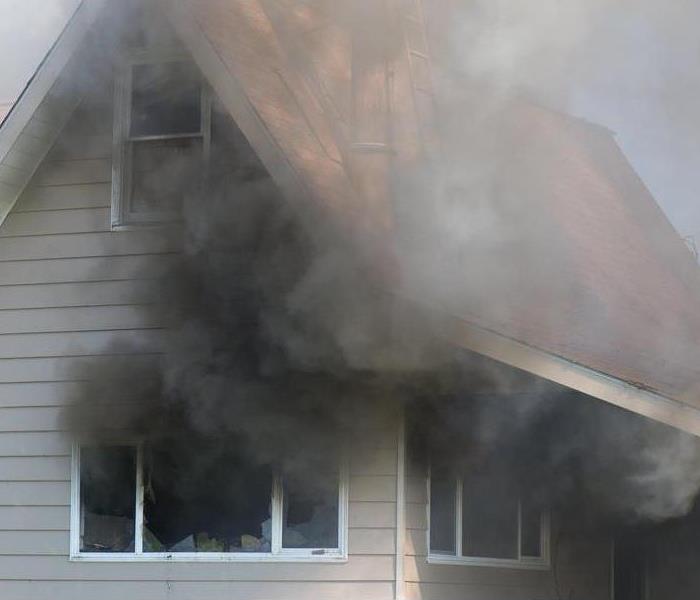 If you experience fire or water damage, give SERVPRO a call for your restoration needs.
If you experience fire or water damage, give SERVPRO a call for your restoration needs.
If you have water damage in your home or business, it may be tempting to hire the first company that comes along. However, as with any service, there are many factors to consider before hiring anyone. Water damage restoration companies vary widely in quality and experience. Asking the right questions can help ensure that you find the right company for your needs. Before hiring a restoration company, you should ask them these questions.
Are you licensed and insured?
When a water restoration company says they're licensed, they mean it. Licensed companies have been tested by the state and should be able to provide you with a license number that can be verified online. Ask for this information when you call around or receive quotes from several different companies, and make sure that they all have licenses.
A water damage restoration company's insurance is another important consideration. Your belongings are expensive, so make sure that your contractor has adequate coverage in case something goes wrong during the process of cleaning up after your flooded basement or broken pipe burst.
You don't want to work with someone who isn't fully licensed and insured; otherwise, if anything happens on their watch, it could cost you more money than what was originally needed for repairs!
Do you have experience?
Experience is important when it comes to hiring a water damage restoration company. The more experience they have, the more likely they are to be able to handle any situation that comes their way and the better job they will do of restoring your home or business.
Experience also shows that a company is reliable, trustworthy and credible. Successful companies have been around for many years because they produce good results, so choosing one with an established track record shows you’ll get what you pay for.
Are the technicians trained?
The technicians you hire should be highly trained in water damage cleanup and restoration. Good and trustworthy technicians should also have training in mold remediation, fire damage restoration, flood damage restoration, and storm damage restoration.
Make sure that the technicians who are going to be working on your home are certified by the IICRC (International Institute for Certification of Restoration Contractors). This certification ensures that they have been trained properly and will provide a high-quality service when they're done with your repairs.
How long have you been in business?
The length of time a company has been in business can be an indication of its reliability. Ask the potential company how long they have been in business, and if they have been in the industry for as long as you think would be appropriate based on their state's licensing requirements.
Do you work with insurance companies?
It's important to ask whether the company you're considering has experience working through the claims process with insurance companies. Ask them if they take care of the claims process for you as part of their service or if it's something that you will have to deal with yourself.
If you want a smooth process from start to finish, make sure that your water damage restoration company is licensed, and insured, and handles the claims process from start to finish so that they can handle all aspects of the mitigation and restoration process of your home or business.
Do you offer free estimates?
It is important to get an estimate before starting work in order to determine the scope of the damage and ensure that you are getting what you need. However, some companies may try to trick you by giving a high-priced estimate upfront. They might claim that they're offering a "free" estimate and then charge you for it later on.
Estimates should be based on the actual damage—not just guesses about how much it will cost or how long it will take, which could lead to higher fees than necessary. At least three things should factor into these estimates:
How much labor is required? How much equipment is required? How long will this process take?
Do you provide emergency services?
If your home or business is damaged by water, it’s not always possible for you or your family to wait all day for help. You want someone who will come out immediately when you call them about an emergency situation.
How do they handle same-day service?
There are two types of restoration companies: those who provide same-day service and those who don’t. If it's possible that your home or business could be flooded with water at any time, then you might want a company that offers this type of quick response time in case something happens. Some organizations offer on-call services as well—if this sounds like something worth looking into for your needs, make sure that whatever company provides said service is available whenever needed!
Can you provide references from customers that have used your services for water damage repair?
Asking for references can be a great way to learn more about a company and what they do, but it's important that you ask the right questions. Ideally, you should ask for references from previous customers who have used their services. If they're unwilling to provide any, that could be a bad sign. However, if they do provide them or if you know someone who has used their services before and had a positive experience with them, it can give you peace of mind when deciding on which company to hire.
Asking these questions will help ensure that you choose the right water damage removal company.
Remember, water damage restoration is an important process that needs to be handled correctly from start to finish. While it may seem like a lot of questions, these are all important things to consider when hiring a water damage restoration company. Asking these questions will help ensure that you choose the right water damage removal company.
How to Create a Fire Escape Plan For Your Business
12/12/2022 (Permalink)
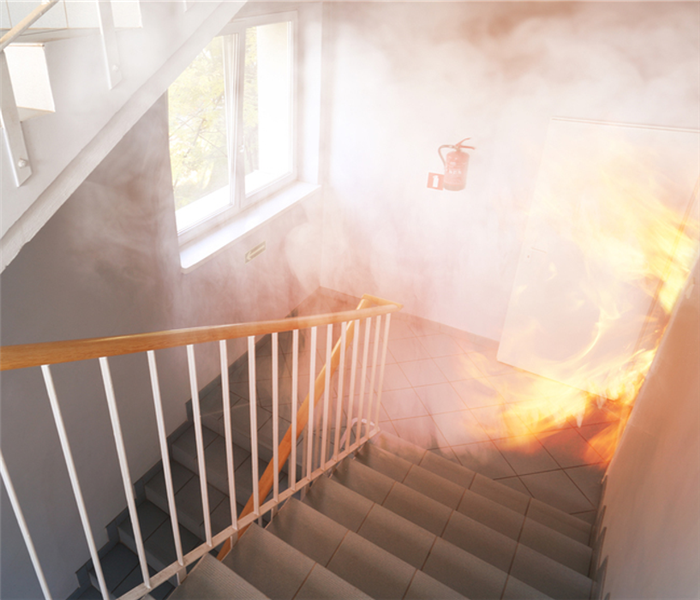 Having a fire escape plan in place can help you to prevent fires.
Having a fire escape plan in place can help you to prevent fires.
Creating a Fire Escape Plan for Your Business
Fire safety is an important part of running a business and having a fire escape plan in place can help you to prevent fires and reduce the impact if one does occur. By following these steps, your business will be able to create a fire escape plan that meets legal requirements and keeps people safe in the event of an emergency.
Know the Layout of Your Building
The first step to creating a fire escape plan is to know the layout of your building. For example, do you know where your fire extinguishers are located? Do you know how to use them in case of an emergency? Are there any other safety measures in place, such as sprinklers or alarms, that would help alert you if a fire broke out? Knowing these details can help guide your evacuation route and prepare you for what may come.
Practice Your Evacuation Plan Regularly
Talk through potential emergencies with employees. You should have a meeting with all of your employees. At this meeting, discuss what to do if there is a fire and what everyone needs to do if they are trapped in a room. Make sure that everyone knows how to use the available fire extinguishers, too.
You should practice your fire escape plan at least twice a year, and more often if your business requires it. If you are required by law to have a fire drill, you'll need to make sure all employees know what's expected of them during the drill. You may also want to consider conducting drills with more than one employee present, so they can all practice working together in an emergency situation.
If you don't have any legal requirements for fire drills, but still want to conduct them more frequently than twice a year (as we strongly recommend), ensure that everyone knows why they're taking part in these exercises and how they can help avoid putting themselves or others at risk when an actual emergency occurs.
Take Note of Fire Hazards
It's important to keep an eye out for fire hazards. Fire hazards include combustible materials—wood, paper, plastics, and fabrics—as well as electrical equipment like extension cords, lighting fixtures and outlets. Heating appliances such as space heaters, steam irons and coffee pots are also potential sources of fire.
Fire hazards can be prevented by using the right type of material or equipment in your business. For example:
- Use fire-resistant materials instead of those that are flammable
- Check to see if your wall outlets are properly grounded before plugging electrical devices into them. If they're not properly grounded, they could cause sparking that could result in a fire or shock hazard when plugged into an outlet with a faulty ground connection.
Make the Plan Easily Accessible
Post evacuation routes and floor plans where they can be seen. Make sure that emergency evacuation plans are posted in visible places and clearly marked so that everyone knows how to get out of the building. This includes posting an up-to-date version of your emergency procedures, which should include instructions on what to do in an emergency, where all exits are located, how to find a fire extinguisher if one is needed, etc.
Share information with employees regularly--not just when there's an incident! While it's true that businesses should train their workers on what steps they need to take during an actual incident (such as when someone passes out from smoke inhalation), it's also wise for employers to share this information with employees regularly.
Keep fire extinguishers on-site and know how to use them
Fire extinguishers are your first line of defense in the event of a fire. They should be kept on hand and easily accessible at all times. If you have multiple exits, make sure there is an extinguisher near each one.
If you have more than one type of fire extinguisher on-site, know how to use them.
Class A fires involve paper products, such as books or cardboard boxes. Use water or dry chemical to put out these fires.
Class B fires involve flammable liquids like gasoline or solvents that are stored in their containers for immediate use. Use water or foam to put out these fires (foam will expand over time so it's ideal for this situation). It's important not to let the fumes from Class Bs build up too much before extinguishing them; otherwise they can explode!
Class C fires involve electrical equipment such as televisions and computers—and believe us when we say that no one wants those things exploding in their office space! When dealing with this type of burn hazard, unplug any nearby equipment immediately (if possible) and then turn off power at its source if there isn't an easy way around doing so without touching exposed wires directly yourself first; once all electricity has been cut off safely without risk involved then proceed with using foam instead because it won't conduct electricity like water would do so quickly put out those flames before they spread further throughout your workspace environment where they might damage other objects nearby.
In summary, fire safety is of paramount importance. As a business owner, it’s your responsibility to ensure that your employees are safe and prepared in the event of an emergency. By following this guide and creating a fire escape plan with your team today, you can ensure greater peace of mind tomorrow.
Heavy Smoke Damage Remediation Is Only Effective When Handled Professionally
8/30/2022 (Permalink)
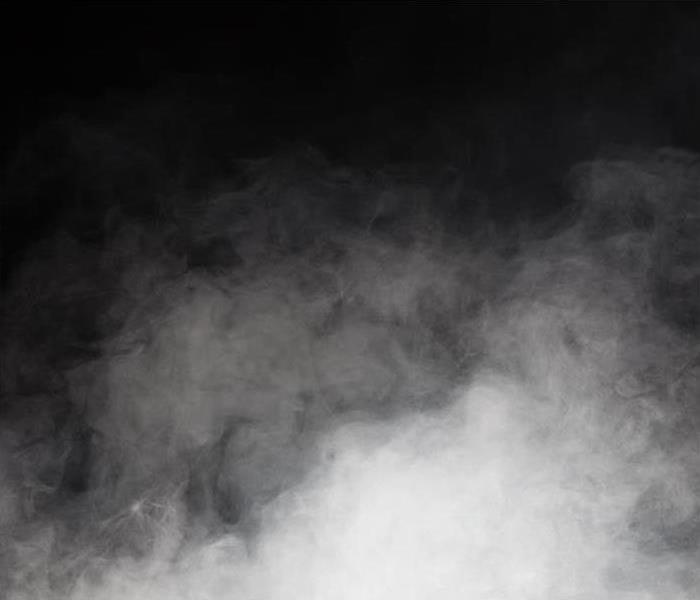 SERVPRO of Loveland is your local specialist in fire and smoke remediation.
SERVPRO of Loveland is your local specialist in fire and smoke remediation.
Heavy Smoke Damage Remediation Is Only Successful When Done Professionally
One of the most difficult parts of a fire cleanup is a full-scale smoke cleaning throughout a home. Smoke is insidious – it gets into every nook and cranny, coating everything it touches with a nasty, oily residue.
A small fire, like when a candle touches a tablecloth and is put out quickly, probably can be handled by the homeowner. A little baking soda in water will strip away the light film.
However, once the damage has spread beyond a single room – or if it’s heavy in that room – you’ll need professional equipment for a quality smoke cleaning. Residential fires produce toxic materials in the smoke, including from items such as
- Plastics
- Electronics
- Treated wood
- Foam and bedding
- Synthetic fibers
A Royal Mess
Smoke from a house fire is disgusting. Humans may have a small amount of resistance to natural wood smoke, having lived around it for as many as 1 million years. But modern houses use a wide variety of chemicals and building materials that we’re not used to. Additionally, inside every house is a huge variety of personal property, and all will leach some toxins into the air while burning.
Cleanup of the Smoke Odor Is Tricky
Soot is caused by incomplete combustion of a material. Oily residue is also produced, combining with the soot to produce a sticky, abrasive goo. It latches on to everything, but porous material is especially tenacious.
There is no effective way a homeowner can clean up this level of smoke damage. It requires professional techniques and specialized equipment, including
- Air filtration devices
- Thermal foggers
- Ozone machines
- Industrial solvents
TSP used to be the leading way to perform a smoke cleaning, but real TSP is no longer available, and the substitute isn’t up to professional standards. Your local experts in smoke remediation use sanitizers recommended by the Institute of Inspection Cleaning and Restoration Certification to strip away the stench and absorb toxic soot. The damage is usually covered by insurance, and the restoration company will work with you and your insurance agent to ensure your home is returned to its former condition.
4 Tips To Avoid Fires While Grilling
7/30/2022 (Permalink)
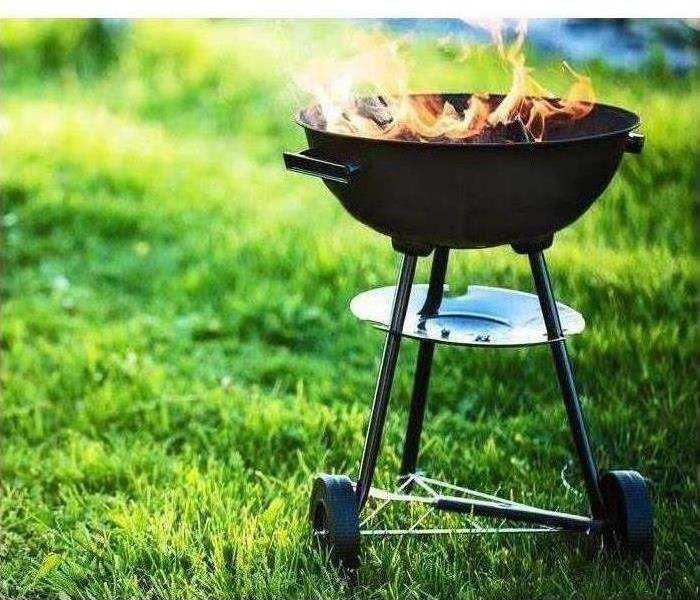 A grill fire can ruin more than your cookout
A grill fire can ruin more than your cookout
Stay Safe When Using Your Grill
Most people in Loveland, CO, enjoy getting together for a cookout: It’s hard to beat the smell of meat cooking on the grill. Nothing ruins a backyard barbeque faster than a grill fire. These four tips will help you stay safe when using your grill.
1. Use Proper Grill Placement
Only use gas or charcoal grills outdoors, never in the garage, in an enclosed patio, or under a cloth awning. Place the grill at least four feet away from the house, fence, and other structures. Check for any low-hanging tree limbs or branches overhead. Be sure the grill is level and stable.
2. Watch for Flare-Ups
Keeping a close eye on the grill while food is cooking is important to make sure you don’t ruin your food, but it can also help you prevent a barbeque fire. Flare-ups can get out of hand quickly, and an unattended grill is a tempting target for children and pets.
3. Keep Your Grill Clean
Cooking on a dirty grill increases your risk of a grill fire. The fat and grease in your grill’s drip tray or grease cup can easily ignite. This kind of grease fire is notoriously difficult to put out and can cause serious smoke damage to your house and surrounding areas. After cooking, wait for the grill to cool, and then clean the grates and drip the pan.
4. Be Prepared
Fire safety experts report that most people who cook on a grill do not keep anything nearby to extinguish potential grill-related fires. Always keep some baking soda on hand to smother a grease fire and have a fire extinguisher nearby that you can access quickly if necessary. Never use water on a grease fire!
A grill fire can ruin more than your cookout. Smoke damage to your home could require lengthy fire restoration work. Worse, grill-related fires can easily become structure fires. Follow these tips to stay safe when using your grill.
4 Steps To Take When Cleaning Your Grill
6/6/2022 (Permalink)
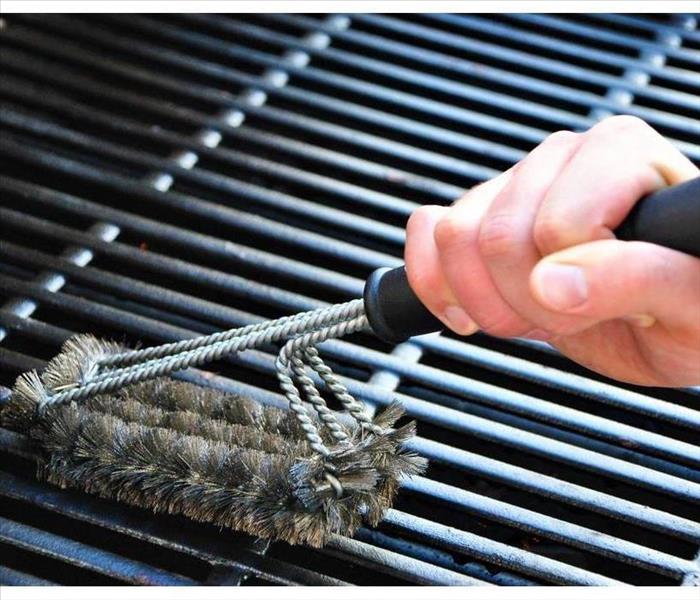 Keep your grill clean.
Keep your grill clean.
Grill Maintenance
When the weather starts to warm up, you might dream about breaking out the grill and firing it up for parties at your Loveland, CO, home. However, if you don't follow a few cleaning tips, your grill might not be safe to use. Fire mitigation experts recommend yearly grill maintenance to keep it in great shape and reduce the chance of grease fires. Here are three steps to take when cleaning your grill.
1. Gather Your Grill Cleaning Materials
Before you start cleaning, you want to gather everything you need to clean your cooker. You'll need a large container to hold water and cleaning solution, a stiff wire brush, a sponge and some stainless steel polish.
2. Clean the Grate
Before taking the grate out of the grill, scrub it well with your wire brush to ensure you get any food particles off and help remove any built-up charred material. Then, fill your container with some hot water and dish soap and allow the grate to soak for a half-hour. Once it is done soaking, scrub it clean with a sponge. Rinse the grate well and set it aside to dry while you do the rest of the grill cleaning.
3. Wash the Inside
If you have a charcoal grill, empty any old briquettes into a metal container. If you have a gas grill, remove any hoods or grease trays. Vacuum the inside of the grill to remove all charcoal dust or lingering food bits. Thoroughly clean every surface of the inside of the grill with a wet sponge and a powerful cleaning agent. Pay special attention to any built-up grease spots that could cause a grease fire if left alone.
4. Polish the Outside
The final step of the grill cleaning process is polishing the outside. You want the outside to look just as good as the inside. Be mindful of areas around knobs or hookups where dirt might linger. If you don't have a stainless steel grill, use your sponge and cleaning solution to clean the outside of your grill.
Keeping your grill cleaned and in tiptop shape extends the life of your grill and helps keep your family safe from dangerous grease fires.
How To Use a Fire Extinguisher Effectively
3/14/2022 (Permalink)
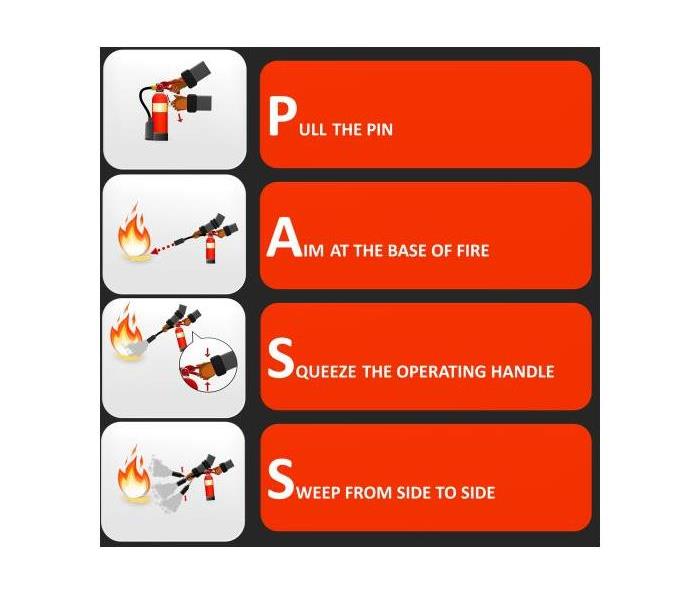 The PASS technique (pull, aim, squeeze, sweep) for proper use of an extinguisher.
The PASS technique (pull, aim, squeeze, sweep) for proper use of an extinguisher.
The PASS Technique
Are you familiar with proper fire extinguisher use in the event of a fire at your business in Loveland, CO? It may appear straightforward, but every second counts in an emergency and quick action may help stop the spread of the fire. By correctly using an extinguisher, you may also be able to prevent the need for a significant fire damage assessment after the event. The following steps illustrate the PASS technique (pull, aim, squeeze, sweep) for proper use of an extinguisher.
1. Pull
The first step is to pull the ring pin on the extinguisher, located near the lever. Removing the pin will break the seal and prepare the device for use. Look at an extinguisher in your building to see where the pin is located.
2. Aim
While holding the lever in one hand, point the fire extinguisher nozzle in the direction of the fire. Aiming towards the base of the fire, and not at the flames, will help cut off the fire from its source.
3. Squeeze
When you are ready to discharge the extinguisher contents, squeeze the lever. Hold on tight, as the contents may be expelled forcefully. Be sure to keep aiming at the fire’s source.
4. Sweep
Sweep the extinguisher from side to side while still pointing it at the source of the fire. Continue this motion until all of the extinguishing media is released or until the fire is completely out. Be sure to watch the area closely to ensure the fire does not re-ignite.
Keep in mind that a fire extinguisher should be used on small fires only. If the fire is large or if you feel incapable or uncomfortable handling it on your own, evacuate the building and call for help. Whether you are dealing with a small kitchen fire, utility room fire or a fire in a cigarette receptacle, being prepared to use an extinguisher may prevent serious property damage from occurring.
You Fire Cleanup Should Include Electronics – Here’s Why
2/1/2022 (Permalink)
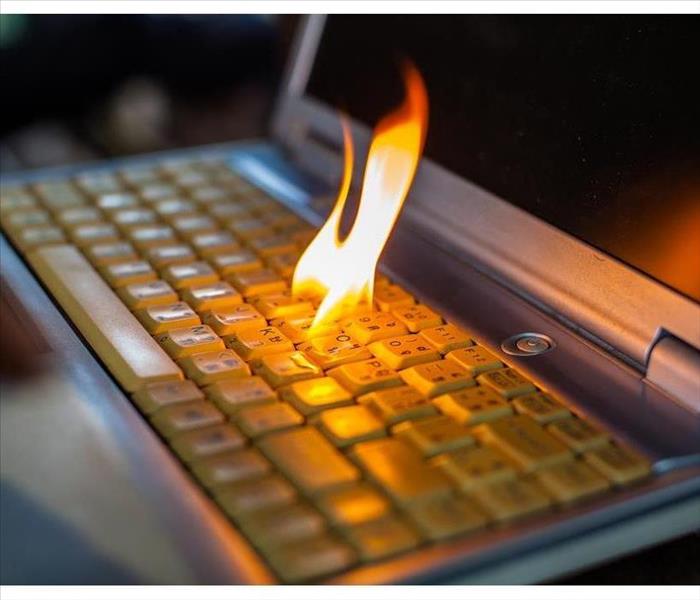 Be sure to talk to your fire cleanup specialist about electronics cleanup.
Be sure to talk to your fire cleanup specialist about electronics cleanup.
You and your family made it through the fire and most of your belongings look untouched. But unbeknownst to many homeowners in Loveland, CO, even materials that look undamaged can be impacted. This is especially true of electronics, which can be penetrated and permanently ruined. Still not convinced your fire cleanup efforts should include cleaning electronics? Learn exactly how smoke can impact your electronics.
How Smoke Causes Damage
Electronics are remarkably delicate and lots of things can impact how well they work. There are two main elements of fire that can impact electronics.
• Smoke damage - smoke penetrates deep crevices in electronics, making them prone to overheating and failure
• Soot - Pushed in by smoke, soot can form a layer in delicate electronics, interrupting circuits and causing malfunction
You know what about smoke causes the problems, but how do these things wreak havoc?
Corrosion
Soot is acidic, and acid and electronics never mix. When soot gets into wires and circuitry, it can corrode these delicate surfaces. The result is degraded components and a device that may soon fail.
Insulation Damage
Soot can also leave a film that coats the inside of electronics, forming a sort of insulation. This can result in overheating once you turn these devices back on after fire cleanup. Overheating leads to failure in the best case and can trigger a fire in the worst case.
Magnetization
Believe it or not, smoke has a magnetic charge. Magnets can short circuit electronics - something you might not realize until you’ve used your device a few times and find it stops working.
High heat and soot can be devastating to sensitive electronic devices, causing malfunction and even triggering new fires. The good news is that there are ways to salvage your electronics safely. Be sure to talk to your fire cleanup specialist about electronics cleanup to ensure you’ve covered all your bases after a fire.
 By understanding the dangers of wildfires and taking steps to prepare and protect your home, you can minimize the risk of damage.
By understanding the dangers of wildfires and taking steps to prepare and protect your home, you can minimize the risk of damage.


 24/7 Emergency Service
24/7 Emergency Service







